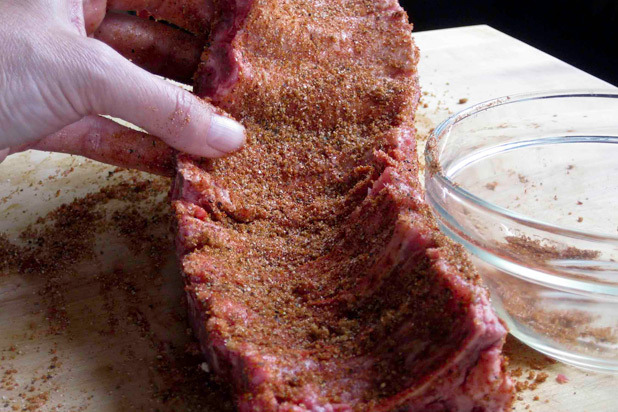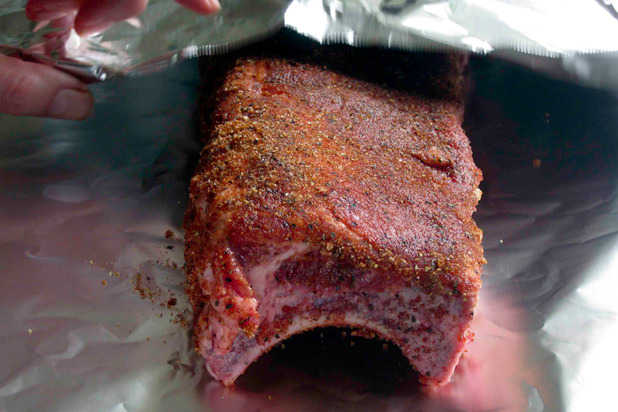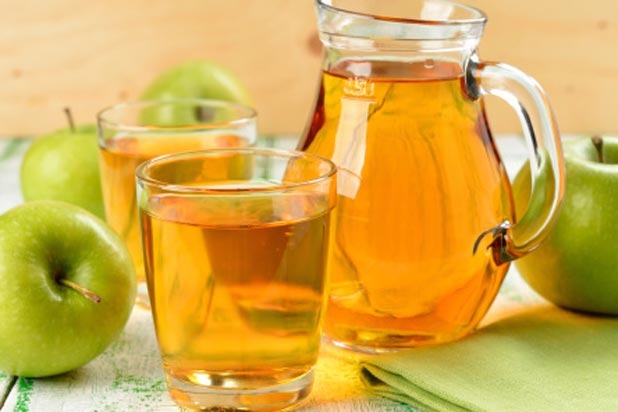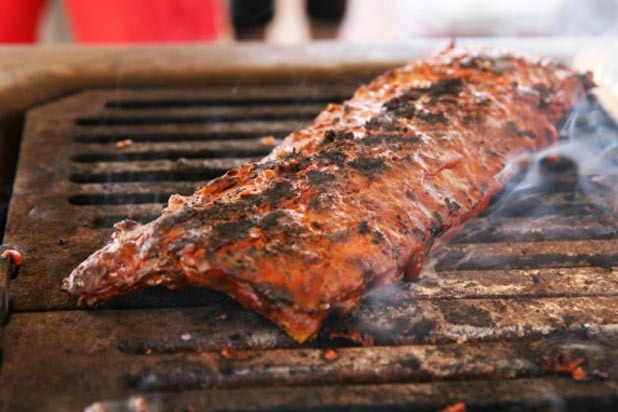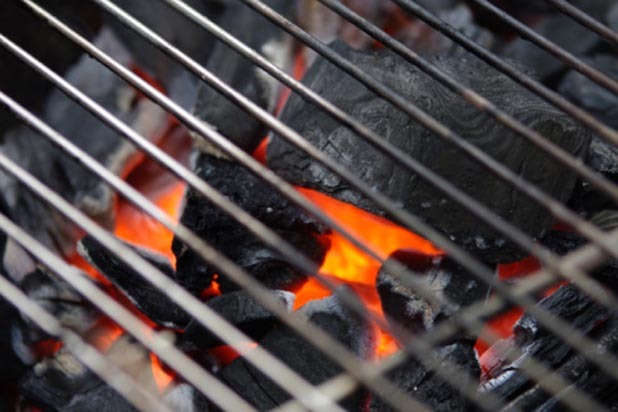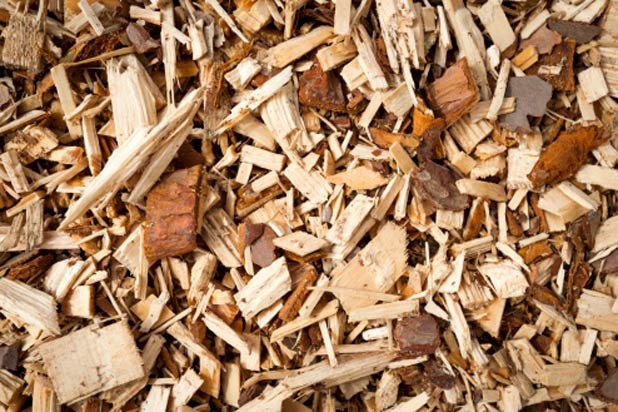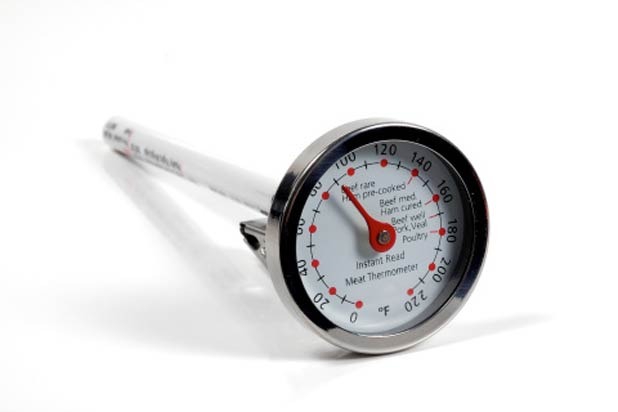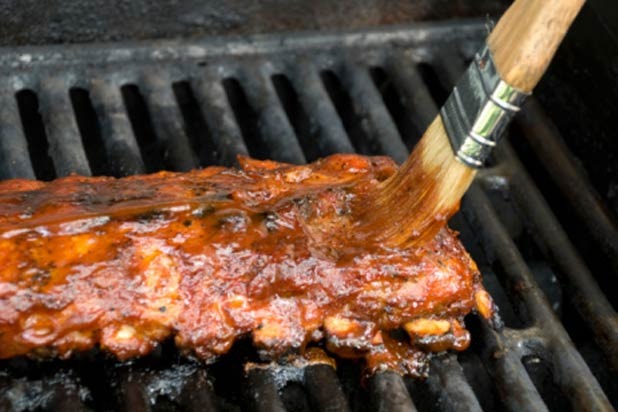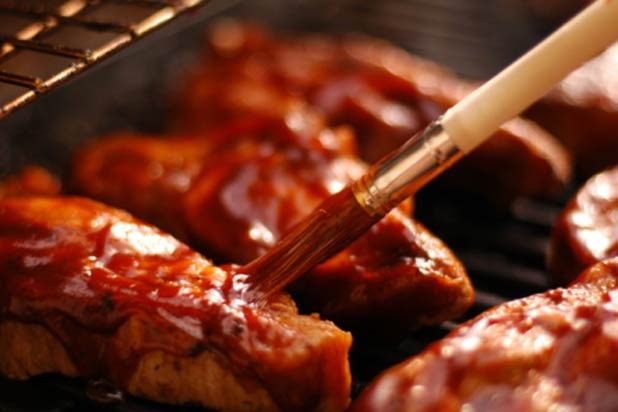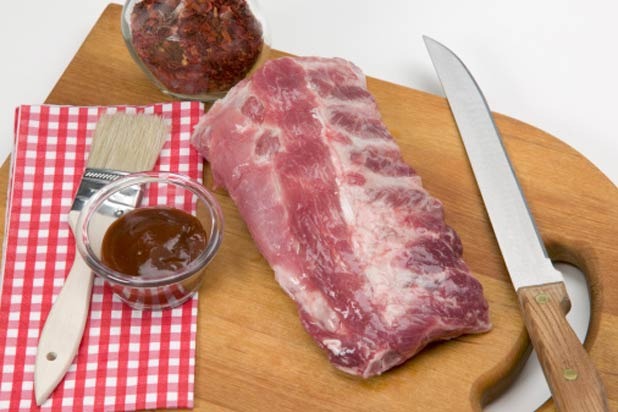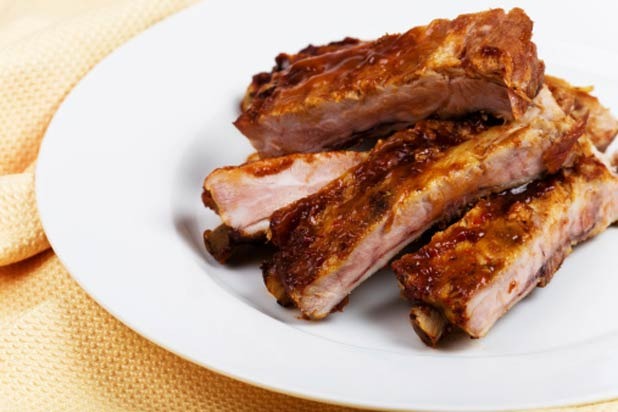How To Make A Great Rack Of Ribs Slideshow
When you take your ribs out of the package, you'll notice a light, white skin across the bones. This is called the silver skin, and Coopey recommends cutting it away prior to seasoning and cooking.
Seasoning Your Ribs
Like with most meats, it's important to season them well prior to cooking. Coopey recommends a dry rub of seasonings or a vinegar-based "mop sauce," which could be your favorite barbecue sauce with a little vinegar mixed in. This step of the process has even more of an impact when you cut away the silver skin, allowing the meat to be submerged in the rub or the sauce thoroughly.
Aluminum Foil
Everyone has a different way to start their ribs, but most believe in the slow-and-low method first. Coopey and Cookston both agree that for incredibly moist, tender ribs, slow-roasting your ribs wrapped in aluminum foil really helps you achieve the tenderness you want. Cookston's rule of thumb is with any ribs with longer than two hours of cooking time, whip out the aluminum foil and cook them for at least two and a half hours in the foil and the rest without. It helps tenderize the meat and give it a beautiful flavor.
Cookston’s Flavor-Enhancers
Cookston has a few tricks up her sleeve when it comes to enhancing the flavor of her ribs. She likes adding adding a few tablespoons of apple juice, grape juice, or even cola to her ribs wrapped in aluminum foil to give them great flavor. In addition to flavor, the chemistry behind these ingredients help the ribs get that perfect tenderness you're looking for. When using dry rubs, she stresses that the spices will lose their potency very quickly when cooking, so make sure to season your ribs well before wrapping them in aluminum foil.
Grilling Ribs
Coopey explained that one of the most common mistakes with ribs is when they're grilled over too high of a heat. This creates flare-ups that will scorch the ribs, burning the outside while the inside is still undercooked. If you're going to grill your ribs, make sure you do so over medium heat.
The Perfect Grill
Cookston is a fan of grilling her ribs, but she doesn't just grill them — she smokes them, too. Don't stop reading just because you don't have a smoker, though, because it's easy to make one with a charcoal or gas grill.
"Almost any grill can be made into and indirect smoker for longer cooking times. For a charcoal grill, simply build your fire to one side of the grill and cook on the other. Placing a small pan with water or apple juice underneath the ribs to enhance the smoking effect," she says. For gas grills, just place the pan directly on top of the heat source, and cook your food on the other side.
How to Get the Perfect Smoke
"When smoking meats such as ribs," says Cookston, "the smoking wood you use should be used in moderation, just like [with] salt." If you overdo it with the smoke, you'll overpower your product, she warns, and fruit wood such as apple or cherry are her favorites to use so she doesn't drown out the flavor of the ribs.
The Ideal Temperature
With all of this talk about slow-roasting and smoking, you're probably wondering: what's considered low? For most barbecue recipes, Cookston believes that 250 degrees is the ideal temperature. Timing at this temperature depends on what kind of ribs you're making, but as a benchmark, Cookston says that St. Louis cut ribs will cook for approximately five hours total, with two and a half hours wrapped in aluminum foil.
Avoid the Burn
So many people associate a juicy rack of ribs with a basting sauce, but if you're basting the entire time you're grilling them, you're doing it wrong, says Coopey. Only baste the ribs with barbecue sauce during the last 10 minutes of grilling. If you add barbecue sauce too early, it will burn and you'll end up with char-flavored ribs.
Get Your Sauce Ready
Cantwell is a firm believer in warming up the sauce you're using for basting before adding it to the ribs. If the ribs are sitting on a smoking hot grill at around 140 degrees, what good does cold sauce do? Heating up the sauce also thins up the consistency, he says, which allows it to penetrate the ribs better.
Play It Safe
On the same topic, oftentimes the basting sauce is the sauce you're serving the ribs with, and Cantwell stresses to make sure you're being safe and sanitary when doing this. Make sure to separate the sauce you're going to use for marinating and basting from the sauce you're serving so that there's no risk for contamination.
What Is the Perfect Tenderness?
Speaking of perfect, Cookston claims that too many people think that ribs are "perfect" when they fall of the bone. This is incorrect, she says, because a perfectly cooked rib should be one with meat that pulls cleanly from the bone when bit—– you don't want the meat to fall off before you even bite it.
